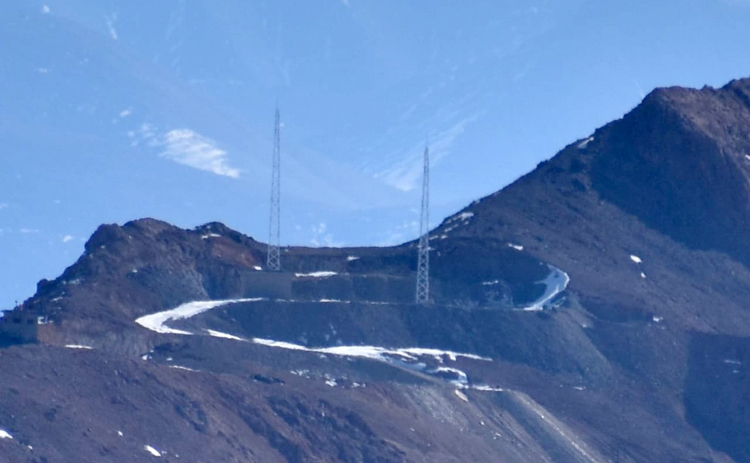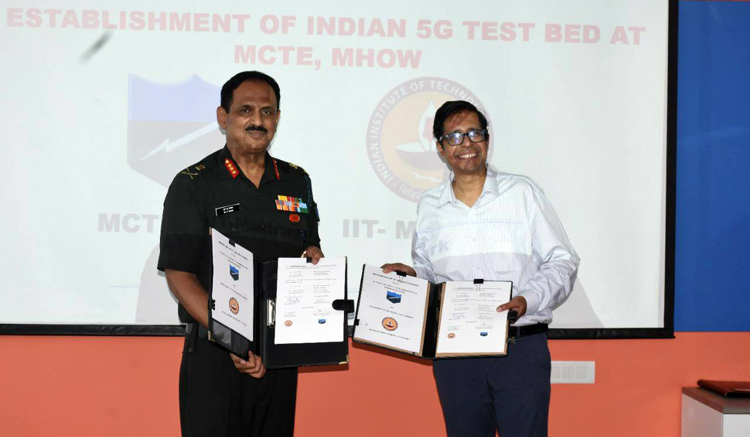INDIAN ARMED FORCES CHIEFS ON OUR RELENTLESS AND FOCUSED PUBLISHING EFFORTS

The insightful articles, inspiring narrations and analytical perspectives presented by the Editorial Team, establish an alluring connect with the reader. My compliments and best wishes to SP Guide Publications.

"Over the past 60 years, the growth of SP Guide Publications has mirrored the rising stature of Indian Navy. Its well-researched and informative magazines on Defence and Aerospace sector have served to shape an educated opinion of our military personnel, policy makers and the public alike. I wish SP's Publication team continued success, fair winds and following seas in all future endeavour!"

Since, its inception in 1964, SP Guide Publications has consistently demonstrated commitment to high-quality journalism in the aerospace and defence sectors, earning a well-deserved reputation as Asia's largest media house in this domain. I wish SP Guide Publications continued success in its pursuit of excellence.
- Operation Sindoor: Resolute yet Restrained
- India’s Operation Sindoor Sends a Clear Message to Terror and the World – ‘ZERO TOLERANCE’
- Japan and India set forth a defence cooperation consultancy framework, talks on tank and jet engines
- Terrorist Attack in Pahalgam in Kashmir: Unfolding a long surgical war against PAK
- Lt General Pratik Sharma takes over Command of Indian Army's Northern Command
China’s 5G Along The LAC
China has rolled out a 5G network on their side of the LAC in Ladakh, which has created a problem in radio communications of the Indian Armed Forces deployed in the border areas
 |
The Author is Former Director General of Information Systems and A Special Forces Veteran, Indian Army |

Konchok Stanzin, Councilor of Chushul in Ladakh has been raising alarm over China’s People’s Liberation Army (PLA) developing permanent defences in intrusions across the LAC affected in 2020, constructing high observation towers to look into Indian defences, denying traditional grazing grounds to Ladakhi villagers and poor communications in the border villages of Ladakh. On June 2, 2022, Stanzin reiterated his concern by tweeting: “Requesting from ground zero for 4G in border villages. Chushul constituency’s villages are still deprived of better communication facilities. Don’t treat us as second class citizens. My villages are not normal; these villages are border villages, treated as a priority.”
Stanzin also said that China, after completing the bridge over the Pangong Lake, has installed three mobile towers near Hot Spring very close to the Indian Territory and added, “Isn’t it a concern? We don’t even have 4G facilities in human habitation villages; 11 villages in my constituency have no 4G facilities.”
The communication problem faced by Indian Armed Forces in these areas has “left the authorities concerned in India scrambling to find a solution to deal with the pressing problem”
The trouble with the Indian Elephant is that it is high on rhetoric but meanders around at its own sleepy pace even after being kicked. The fact that the National Security Advisor has not been able to chalk out a National Security Strategy, despite being tasked in 2019 to define one, shows what our priorities are. The program of ‘Vibrant Villages’ will take its own sweet time, with associated corruption. Similar will be fate of the recently announced Border Management Authority of India, indicating that the Ministry of Home Affairs has been unable to handle border areas appropriately all these years.
China has rolled out a 5G network on their side of the LAC in Ladakh, which has created a problem in radio communications of the Indian Armed Forces deployed in the border areas. According to sources, a strange booming voice is heard in the radio communication network of our military because of the 5G waves coming from across the LAC, making it difficult to communicate. It is noteworthy that while China is rolling out 5G network all along the LAC, it has given priority to Eastern Ladakh. According to media report, the communication problem faced by Indian Armed Forces in these areas has “left the authorities concerned in India scrambling to find a solution to deal with the pressing problem”.
Media quote a source saying, “The Defence Research and Development Organisation (DRDO) is working to find a permanent solution to the emerging problem. Plans are being discussed to launch a new satellite to be used for the Indian armed forces which will help in using the K-band frequency. This frequency would not be open to the general public or for commercial use. “It would be kept aside to be used only by the defence forces and for radio astronomy.”
The problems in the border areas need to be taken much more seriously and given priority within the development of border infrastructure considering the aggressive stance of China
Ravi Gupta, a former DRDO person told the newspaper, “If at all there is any problem in the communication equipment due to the 5G used by China at northern borders, the DRDO is capable enough to resolve it.” The “if at all there is a problem” remark by Ravi Gupta indicates the typical lackadaisical DRDO approach to problems faced by the Armed Forces and in terms of national security as the same problem will also be faced also by the Central Armed Police Forces (CAPF) deployed in border areas.
The issue needs to be viewed in the following context:- With reports of China erecting 5G mobile towers coming for some time, did we anticipate possible radio communication problems for our troops?
- In what timeframe will the new satellite be launched for K-band usage by our military, plans for which are in still at the discussion stage?
- Obviously, the satellite will be launched by the Indian Space Research Organisation (ISRO) but will the private firms also be consulted for early manufacture of the satellite.
- Will a single satellite suffice covering the complete border with China or will it be prudent to launch multiple satellites to ensure redundancy, considering Chinese capability to target or interfere with functioning of exclusive military communication satellites?
- Have we taken into account that with reports of Russia developing advanced laser system that can blind enemy satellites, China also would be developing similar weaponry?
- Will the existing radio communication equipment with our troops and the CAPF deployed in border areas be able to use the K-band or will these require modification or replacement? In case of the latter, in what time frame would this be accomplished?
- Have we appreciated how this 5G interference will affect our troops in case of clash/conflict with the PLA/China?
- Beyond the short-distance trial of Quantum Communications, what is the MoD’s plan to field this in the Armed Forces?
- Shouldn’t Quantum Communications be developed and fielded in the Armed Forces on war footing by roping in private defence firms as also under ‘Make in India’ through joint ventures with countries like Israel? India and Israel signed for collaborating in futuristic technologies during the visit of Israel’s defence minister to India in June 2022.
The communication problems in the border areas need to be taken much more seriously and given priority within the development of border infrastructure considering the aggressive stance of China. Ironically, the media instead of highlighting and debating such issues having implications for national security, would be focused on the forthcoming 5G auction in India – who won the auction, any political compulsions, possible leak of bids, allegations, counter allegations and the like.

The Army’s Military College of Telecommunication Engineering (MCTE) signed a memorandum of understanding (MoU) with Indian Institute of Technology, Madras (IIT-M) on June 20, 2022, for establishing a 5G test bed. 5G can support accelerated battlefield functions, seamlessly connect multiple domains, provide commanders multiple options for response, kinetic as well as non kinetic, enhancing the potency of war fighting in a data dense environment. When 5G will be fielded in the military is the important question.
5G can support accelerated battlefield functions, seamlessly connect multiple domains, provide commanders multiple options for response, enhancing the potency of war fighting
At the national level, a 5G test bed has already been established to speed up launch of domestic 5G technology through collaboration with technology institutes including IIT Madras, IIT Kanpur, IIT Bombay, IIT Delhi, IIT Hyderabad, Indian Institute of Science, Bangalore, and R&D (SAMEER and CEWiT) institute. The 224.01 crore project funded by the Department of Telecom, Government of India for a period of three and a half years covers both the sub-6 GHz (FR1) and 26 GHz mm-wave (FR2) bands. The Test Bed also comprises of CPE, a state of art nBIoT ASIC chip, Advanced Use cases (IoT), Smart Meter, V2X, Advanced technology (Lifi as a last mile high speed delivery mechanism, Multi-RAT Solution).





